Speed vs. Distance: Unraveling OM1 to OM5 Fibre Performance
Multimode fibre (MMF) is a type of optical fibre commonly used in communication over short distances, such as within a building or across a campus. Multimode fibre optic cable has a larger core, typically 50 or 62.5 microns, which allows multiple light modes to be propagated. As a result, more data can pass through the multimode fibre core at any given time. The maximum transmission distance for MMF cable is around 550 metres at a speed of 10 Gbit/s. It can transmit further at lower data rates, such as up to about 2 kilometres at 100 Mb/s.
How Many Types of Multimode Fibre?
Identified by ISO 11801 standard, multimode fibre optic cables can be classified into OM1 fiber, OM2 fiber, OM3 fiber, OM4 fiber and newly released OM5 fiber. The next part will compare these fibers from the side of core size, bandwidth, data rate, distance, color and optical source in details.
- OM1 Fibre
OM1 fibre typically comes with an orange jacket and have a core size of 62.5 µm. It can support 10 Gigabit Ethernet at lengths of up to 33 meters. It is most commonly used for 100 Megabit Ethernet applications. This type commonly uses a LED light source.
- OM2 Fibre
Likewise, OM2 fiber also comes with an orange jacket and uses a LED light source but with a smaller core size of 50 µm. It supports up to 10 Gigabit Ethernet at lengths up to 82 meters but is more commonly used for 1 Gigabit Ethernet applications.
- OM3 Fibre
OM3 fiber comes with an aqua color jacket. Like the OM2, its core size is 50 µm, but the cable is optimized for laser based equipment. OM3 supports 10 Gigabit Ethernet at lengths up to 300 meters. Besides, OM3 can support 40 Gigabit and 100 Gigabit Ethernet up to 100 meters, however, 10 Gigabit Ethernet is most commonly used.
- OM4 Fibre
OM4 fiber is completely backwards compatible with OM3 fiber and shares the same distinctive aqua jacket. OM4 was developed specifically for VSCEL laser transmission and allows 10 Gig/s link distances of up to 550m compared to 300M with OM3. And it’s able to run 40/100GB up to 150 meters utilizing a MPO connector.
- OM5 Fibre
OM5 fibre, also known as WBMMF (wideband multimode fiber), is the newest type of multimode fibre, and it is backwards compatible with OM4. It has the same core size as OM2, OM3, and OM4. The color of OM5 fiber jacket was chosen as lime green. It is designed and specified to support at least four WDM channels at a minimum speed of 28Gbps per channel through the 850-953 nm window.
OM1 vs OM2 vs OM3 vs OM4 vs OM5: What’s the Difference?
Core Diameter:
OM1 and OM2: Both OM1 and OM2 fibres have a larger core diameter of 62.5 microns. This larger core diameter allows them to support multiple light modes but limits their ability to carry higher data rates over longer distances.
OM3, OM4, and OM5: These fibres have a smaller core diameter of 50 microns. The reduced core diameter enables them to support higher data transmission rates and longer distances compared to OM1 and OM2 fibres.
Data Transmission Rates:
- OM1 and OM2: Typically support speeds up to 1 Gbit/s. OM1 and OM2 fibres are commonly used for slower network connections over shorter distances.
- OM3: Supports speeds up to 10 Gbit/s. OM3 fibre is capable of handling higher data rates, making it suitable for faster network connections.
- OM4: Supports speeds of 10 Gbit/s, 40 Gbit/s, and 100 Gbit/s. OM4 fibre offers enhanced performance and is optimized for higher-speed connections using vertical-cavity surface-emitting lasers (VCSELs).
- OM5: Supports speeds of 10 Gbit/s, 25 Gbit/s, and 100 Gbit/s. OM5 fibre is designed to support even higher data transmission rates and is well-suited for emerging applications requiring increased bandwidth.
Maximum Reach:
- OM1: Has a maximum reach of around 300 metres at 1 Gbit/s.
- OM2: Can reach up to approximately 550 metres at 1 Gbit/s.
- OM3: Supports distances of up to 300 metres at 10 Gbit/s.
- OM4: Offers a maximum reach of up to 400 metres at various data rates, including 10 Gbit/s, 40 Gbit/s, and 100 Gbit/s.
- OM5: Supports distances of up to 150 metres at speeds of 100 Gbit/s.
Color Coding:
OM1, OM2, OM3, and OM4 fibres are typically identified by their orange jackets. However, OM3 and OM4 fibres may also be identified by aqua (or turquoise) jackets to differentiate them from OM1 and OM2 fibres.
OM5 fibres are usually identified by lime green jackets, providing visual distinction from other OM fibres.
- Technical Differences Core Diameter—Single mode fibre has a small diametral core (8.3 to 10 microns) that allows only one mode of light to propagate. Multimode fibre optic cable has a large diametral core (50 to 100 microns) that allows multiple modes of light to propagate.
- Light Source—Multimode devices usually use a LED or laser as a light source. While single mode devices use a laser, or laser diode, to produce light injected into the cable.
- Practical Differences Distance—Light travels a longer distance inside single mode cable than it does inside multimode. So multimode fibre is suitable for short haul applications, allowing transmission distances of up to about 550m at 10 Gbit/s. When the distance is beyond 550m, single mode fibre is preferred.
- Price—Multimode fibre usually costs less than single mode fibre.
- Bandwidth—The bandwidth of single-mode is higher than multimode by as much as 100,000 GHz.
Multimode Fibre Connector Types
There are many multimode fibre connector types in circulation such as ST, SC, FC, LC, MU, E2000, MTRJ, SMA, DIN as well as MTP & MPO etc. The most commonly used fibre optic connector types include ST, SC, FC and LC. Each one has its own advantages, disadvantages, and capabilities. So what are the differences and what do they mean to your implementation? This table of common multimode fibre connectors gives an overview of strengths and weaknesses. Get more details about commonly used fibre optic connectors here: Fibre Optic Connector Types, Market, & Installation
MMF Connector Ferrule Size Typical Insertion Loss (dB) Cost(FS.com) Application Features SC φ2.5mm ceramic 0.25-0.5 £0.65 Mainstream, reliable, fast deployment, field fit LC φ1.25mm ceramic 0.25-0.5 £0.78 High density, cost-effective, field fit FC φ2.5mm ceramic 0.25-0.5 £0.74 High precision, vibration environment, field fit ST φ2.5mm ceramic 0.25-0.5 £0.61 Military, field fit Advantages of Multimode Fibre: Although single mode fibre patch cable is advantageous in terms of bandwidth and reach for longer distances, multimode fibre easily supports most distances required for enterprise and data centre networks at a cost dramatically less than single mode fibre. Besides, multimode fibre optic cable still has many significant advantages.
Multi-user Framework Without Loss Interference Multimode fibre features carrying multiple signals at the same time in the same line. Most importantly, the total power inside the signals carries almost no loss. Therefore, the network user can send more than one packet in the cable at the same time, and all information will be delivered to their destination without any interference and remain unchanged.
Support of Multiple Protocols Multimode fibre can support many data transfer protocols, including Ethernet, Infiniband, and Internet protocols. Therefore, one can use the cable as the backbone of a series of high-value applications.
Cost-effective with a larger fibre core and good alignment tolerances, multimode fibre and components are less expensive and are easier to work with other optical components like fibre connectors and fibre adapters, and multimode patch cords are less expensive to operate, install and maintain than single mode fibre cables.
When evaluating optical fibres for short-range communication, OM5, OM3, and OM4 are prominent choices with distinct characteristics. The following is a comparison of these multimode fibres:
- Bandwidth and Transmission Distance
Compared to OM3 and OM4, OM5 Fiber offers higher bandwidth and thus supports higher data rates. This is especially beneficial in scenarios where enhanced throughput is required, making it the preferred choice for applications requiring higher data rates. For all current and future multimode IEEE applications, including 40GBase-SR4, and 100GBase-SR4, the OM5 has the same maximum allowable distance as the OM4. With 40G-SWDM4 or 100G-SWDM4 transceivers, compared to the OM4 and OM3, the OM5 offers an advantageous transmission distance.
- Channel Loss and Crosstalk
The OM5 fiber cable operates in the range of 850 to 950nm wavelength and it can provide a 100GB data stream with only one pair of parallel optical fibers. The less optical fiber makes the less crosstalk, and the lower overall loss. The attenuation of OM5 wideband multimode fiber has been reduced from 3.5 dB/km for previous OM3, and OM4 cables to 3.0 dB/km.
- Cost Considerations
In fact, OM5 cabling will cost about 50% more than OM4. Besides, with the considerably declined costs of single-mode transceivers due to silicon photonics technologies and large hyperscale data centers buying in large volumes, more and more users will be prone to choose single-mode transceiver modules.
Is OM5 Fibre Compatible with Existing OM3 and OM4 Fibre?
Certainly. OM5 fibers are designed with a 50-micron core size, making them compatible with OM4 and OM3 fiber cables. This compatibility stems from their shared core size, enabling seamless integration and flexibility in network design. This implies that if you have an existing infrastructure using OM4 or OM3, you can introduce OM5 patch cords to enhance performance without the need to replace the entire cabling system. This backward compatibility supports a phased and cost-effective approach to network upgrades. However, maintaining consistency in all components, including connectors and adapters, with the multimode fiber standards is crucial to ensuring optimal performance and reliability of the network.
What Types of Connectors are Available for OM5 Fibres?
OM5 cables come with a variety of connectors, including LC, SC, ST, and MTP/MPO. The choice of connector depends on the specific requirements of the network and the equipment being used. FS’s OM5 fibers support a wide range of connectors, which can be customized to meet various needs based on different scenarios.
Which Optical Transceiver Modules are OM5 Fibres Compatible with?
OM5 Fiber is compatible with a variety of optical transceivers or modules that support multimode fiber connections. The choice of module depends on the specific requirements of the network equipment and application. Some common optical modules that are compatible with OM5 cable include:
- SR4 (Short Reach 4) Modules: These modules are designed for higher data rates, often used in 40/100 Gigabit Ethernet (40/100GbE) applications.
- SR8 (Short Range 8) Modules: SR8 modules are used for high-density connectivity and support 400 Gigabit Ethernet (400GbE) for scenarios requiring fast, high bandwidth in data centers and enterprise networks.
- SWDM4 (Short Wave Division Multiplexing 4-channel) modules: Ideal for scenarios requiring high-density and high-performance connectivity, they can be used to support 40/100 Gigabit Ethernet (40/100GbE) applications.
When selecting modules for OM5 cables, it’s essential to ensure compatibility with the specific connectors on the patch cables (e.g., LC, SC, MTP/MPO) and the networking equipment in use. Always refer to the specifications provided by the module and cable manufacturers to ensure proper compatibility and optimal performance.
Is OM5 Specified in Optical Transmission Standards such as Ethernet and Fibre Channel?
There are no transmission standards that specify OM5 or SWDM. Transmission standards typically include only one multimode fiber variant that is selected based on economic, commercial, and technical criteria. Parallel transmission is the default multimode fiber variant for data rates ≥ 40G.
OM5 Multimode Fibre Vs. Single Mode Fibre: Which to Choose?
Although the price of single mode fibre (SMF) is reducing recently due to new technologies application, the cost of pluggable optics still limits the implementation of SMF in data centres. Compared to that, OM5 can multiplex four wavelengths spaced in the range of 850nm to 953nm, increasing data capacity by a factor of four as well as reducing fibre cost. Furthermore, MMF has more advantages on installation, troubleshooting, cleaning and overall maintenance, which makes it a better choice in data centers. However, the problem for MMF is distance. And the maximum distance will decrease as the data speed grows. Therefore, multimode fiber has higher value to network owners for distance up to 500m and OM5 allows for migration to 400Gbps at the distance up to 150m. For applications beyond 500m, single mode fiber should be chosen.
FAQ's
Om3, om4, and om5 fibre optic cables have varying speeds and distances. Om3 supports different ethernet speeds at varying distances, while om4 and om5 fibers are backwards compatible with om3 and support higher ethernet speeds at longer distances.
Single mode fibre optic cables have less attenuation and can transmit light at longer distances compared to multi-mode fiber optic cables.
Multi-mode fiber optic cables support higher data rates compared to single mode fibre optic cables.
It is important to future-proof the network when choosing fibre optic cables to ensure optimal performance and accommodate potential advancements in technology.
OM5 Fibre is an innovative multimode fiber optic cable designed for high bandwidth over short to medium distances.
Yes, some manufacturers offer bend-insensitive versions of OM fibres, particularly for OM4 and OM5. These are more flexible and less prone to signal loss when bent tightly, making them ideal for high-density cabling environments.
Signal attenuation refers to the weakening of the signal strength as it travels through the fibre. Higher attenuation limits reach. OM3+ fibres are designed for lower attenuation to support longer distances at higher speeds.
Extreme temperatures can impact signal transmission. OM fibres have specified operating temperature ranges. Always consult the manufacturer's recommendations for your specific application.
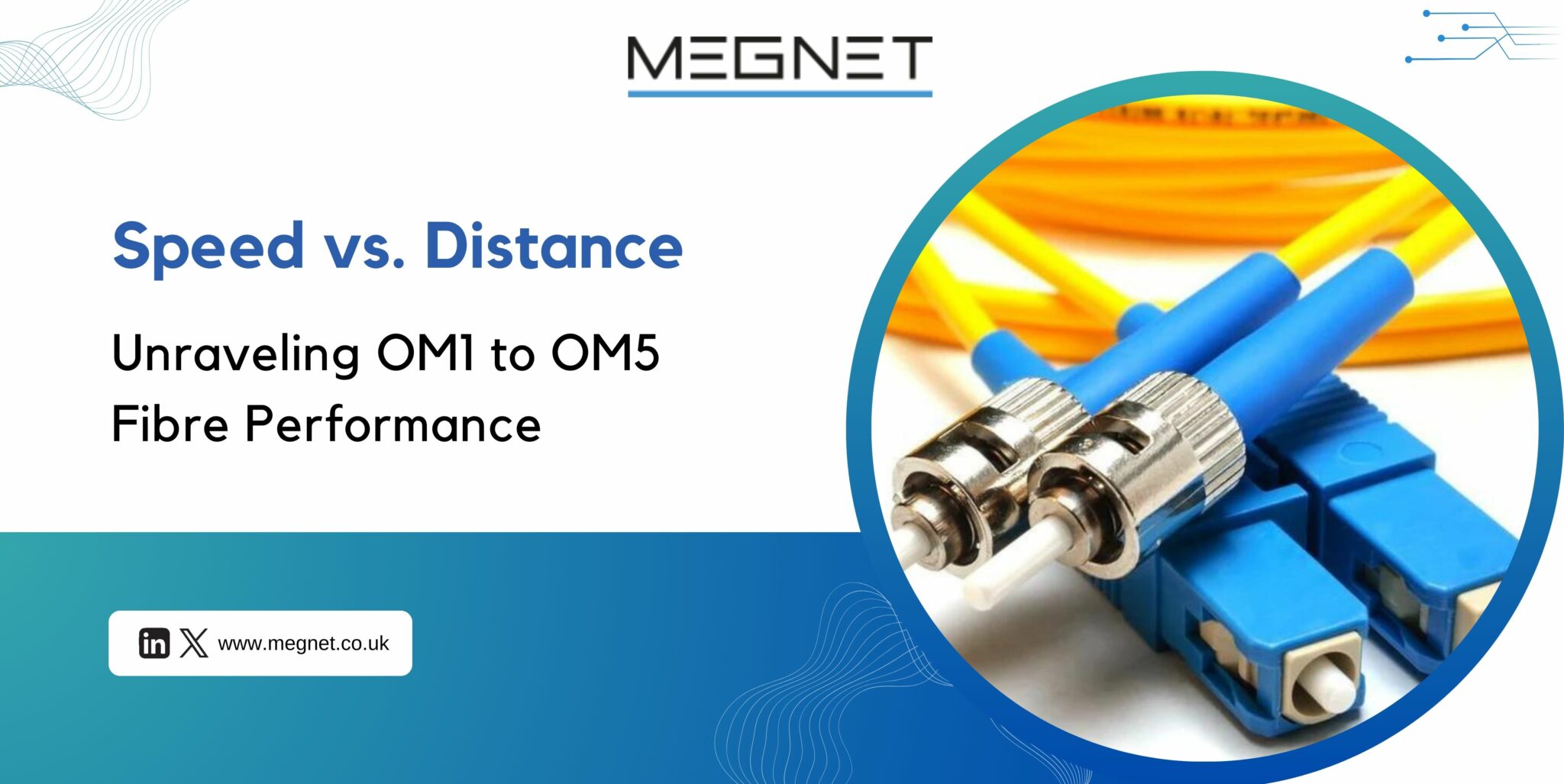


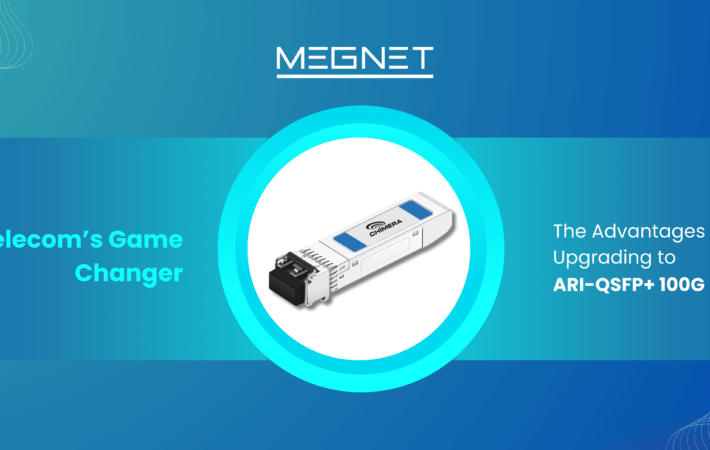

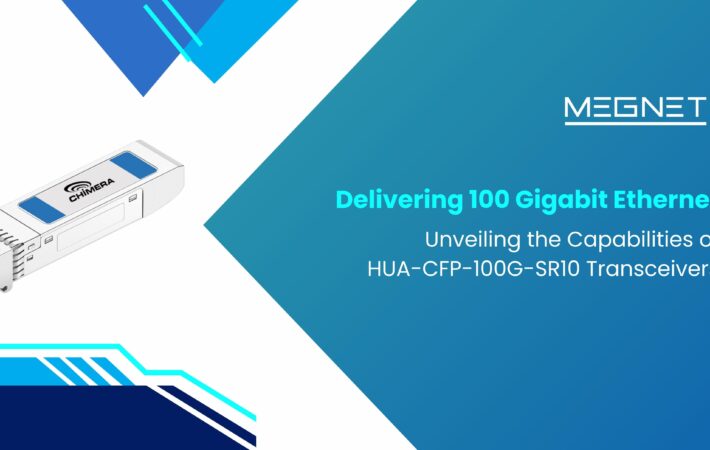
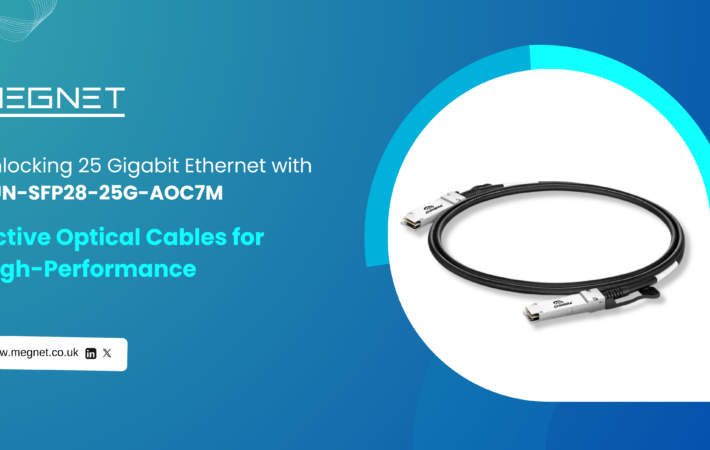
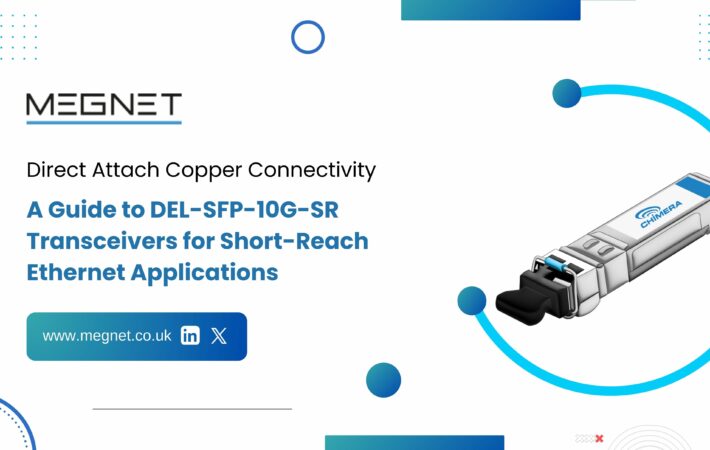


Leave a comment
Your email address will not be published. Required fields are marked *